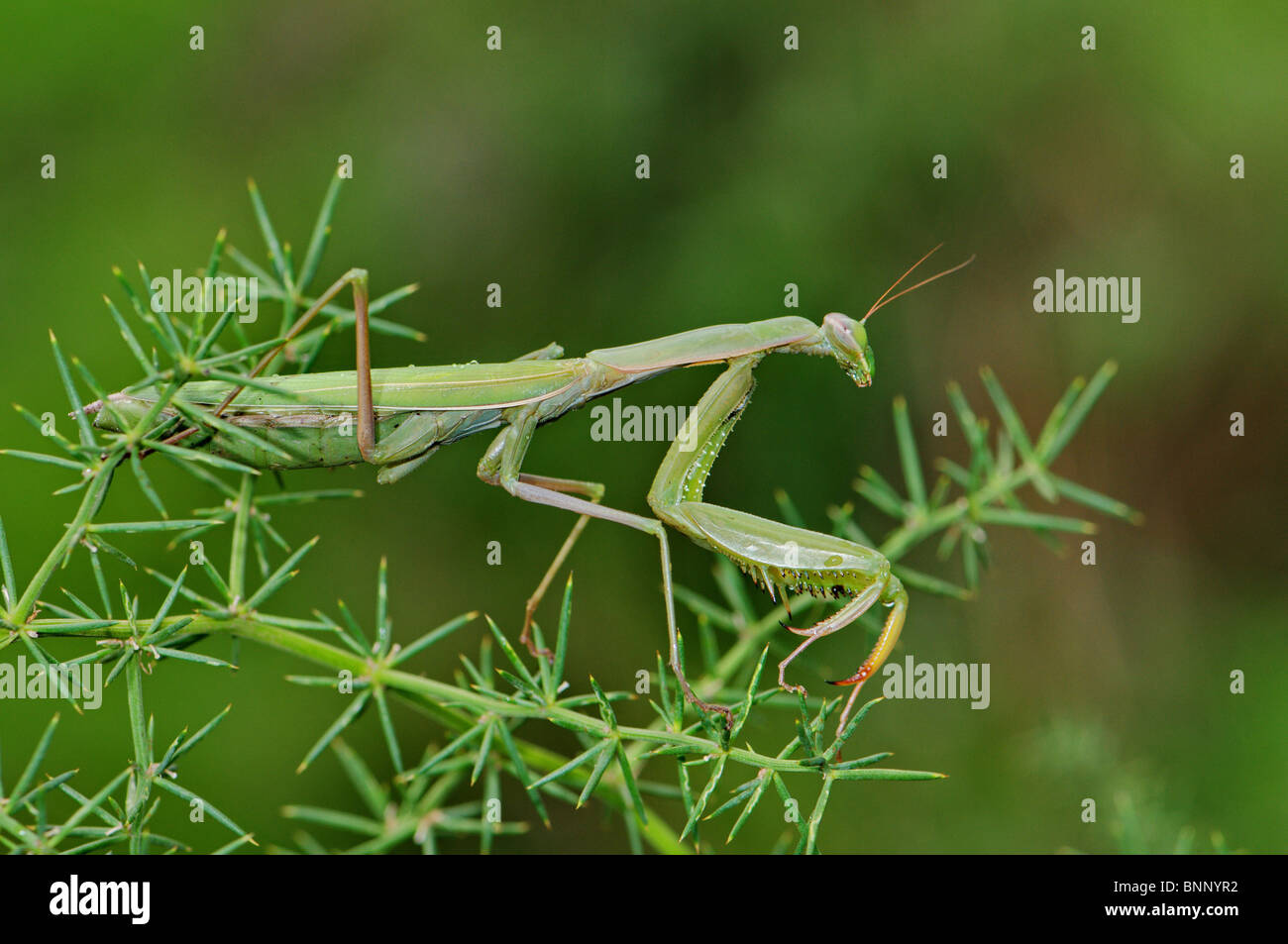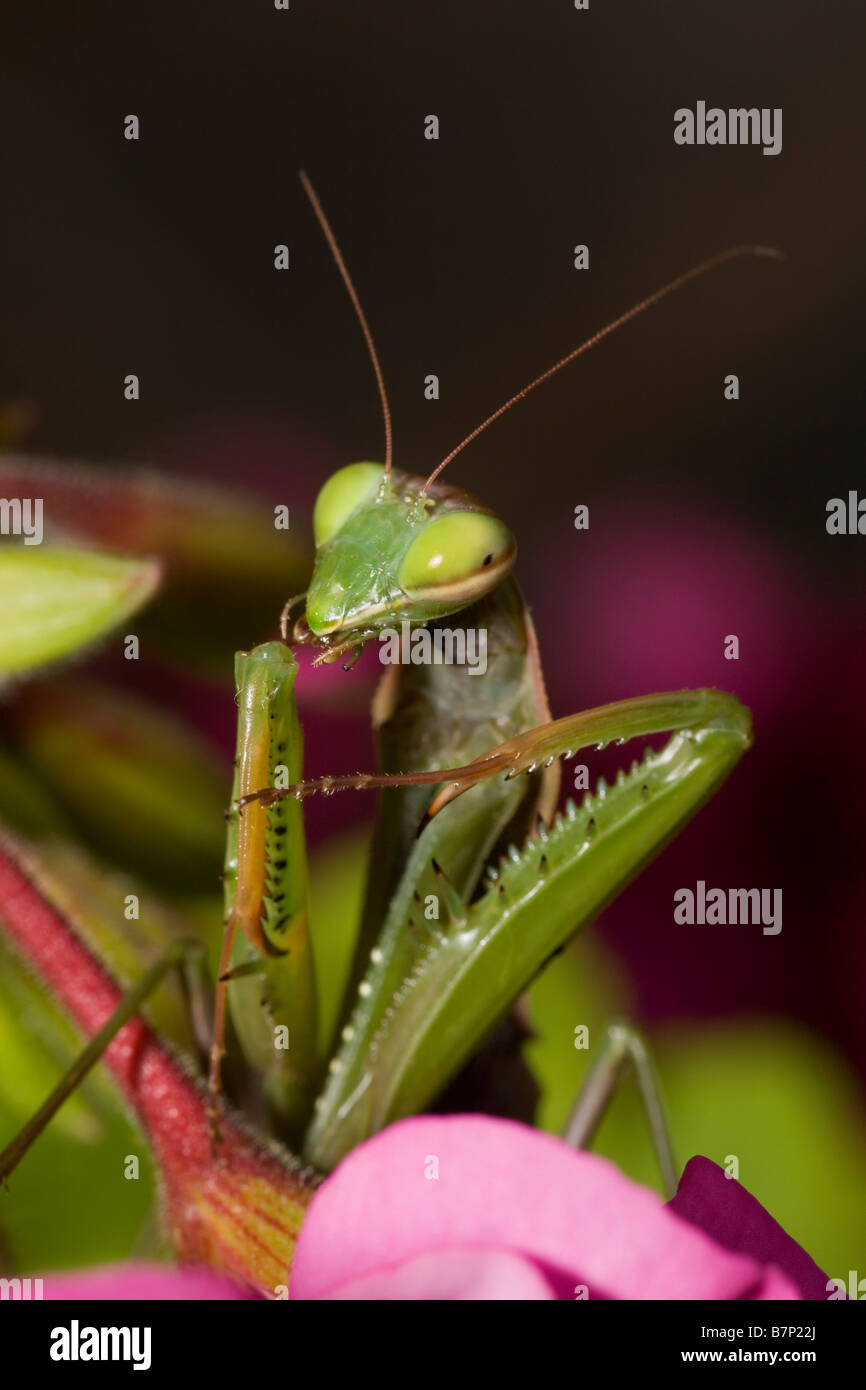
Praying Mantid Mantis religiosa on Pelargonium Mantidae Peloponnese Greece Stock Photo Alamy
Praying Mantis in Mythology Ancient Greek Mythology. In Ancient Greek , the praying mantis is associated with the story of Medea and the Argonauts. According to the myth, Medea, a powerful sorceress, used her magic to transform herself into a praying mantis. This transformation allowed her to hide from her enemies and observe their actions.

Praying mantis, MonastarikiPoros, Greece Maria Sammut Flickr
Praying Mantis Symbolism. Since the time of the Ancient Greeks, praying mantises have long been attributed with supernatural powers. The word "mantis" in Greek means "prophet" or "seer." In southern parts of Africa, the San people believe their god, Kaggen, most often manifests himself as a praying mantis.

praying mantis encountered in south greece r/insects
Praying Mantis laying eggs Southern Greece, Northwest of the island of Crete, Municipality of Chania, Kastelli. Mantis laying Ootheca. We are uncertain of the species, and we spent a bit of time trying to research Greek mantises. This is a small mantis, and we hope one of our readers can supply a species identification.

Praying Mantis (Mantis religiosa) Skala, Kefalonia, Greece… Flickr
Mantis religiosa, praying mantis. The term "mantis" came from the Ancient Greek μάντις (mántis), meaning "soothsayer" or "prophet". (Ref. 1, 2) The name was coined by the German entomologist, Herman Burmeister, in 1838. (Ref. 2) Mantises have a long prothorax and a powerful pair of forelimbs that are folded as if in prayer.

Empusa fasciata Praying mantis, Ikaria, Greece
The praying mantis, with its "hands clasped in prayer," lends itself to having spiritual meaning. For some, the spiritual significance of a praying mantis is one of reflection and thoughtfulness, and a reminder to always keep their focus on God.. The people of Ancient Greece and Egypt saw the praying mantis as a guide for those who.

praying mantis Mantis religiosa mantis insect insects green animal animals fauna Greece Greek
The European mantis (Mantis religiosa) is a large hemimetabolic insect in the family of the Mantidae ('mantids'), which is the largest family of the order Mantodea (mantises). Their common name praying mantis is derived from the distinctive posture of the first pair of legs that can be observed in animals in repose. It resembles a praying attitude. Both males and females have elongated bodies.

Praying mantis Kefalonia, Greece anthropogen
A recent finding of a mantis on the Greek island of Crete is reported and discussed. Additional information on the distribution and similarity of Hierodula transcaucasica Brunner von Wattenwyl.

Praying mantis Mante religieuse, Greece, Oct. 4, 2015. Praying mantis, Pray, Image
The praying mantis is a medium-sized insect that possesses many interesting esthetic qualities. The unique positioning of its front legs makes the bug appear as if it were praying, making it especially recognizable and well-known. You can find the praying mantis not only in the wild but also as an exotic pet in some homes.

Praying mantis greece hires stock photography and images Alamy
In English, a "mantis" is a type of predatory insect. They're also called "praying mantises" because of the shape of their forelegs. The name seems, quite transparently, to come from Ancient Greek μάντις "prophet". But while it's clear to me how they're "praying", it's much less clear how they're meant to be "prophets".

Praying Mantis Mantis religiosa Peloponnese Greece Stock Photo Alamy
Ancient Greece recognized its supernatural powers, with seers employing them for divination. Africans viewed the mantis' stillness as a representation of divine meditation, with a mantis sighting signaling incoming good luck.. Praying mantises are serene creatures, often seen as symbols of peace. A mantis sighting might suggest that you.

Praying Mantis, Greece 2007 dѧvid Flickr
Praying mantises are named for their 'prayer-like' stance. Photo: Shiva shankar [CC BY-SA 2.0] The European mantis is a predatory insect in the family Mantidae. It has a number of adaptations for capturing and devouring its mainly insect prey. These include powerful mandibles (mouthparts) and long, spiked forelegs.

Praying mantis greece hires stock photography and images Alamy
The Basics. The Praying Mantis (Mantis religiosa), or European Mantis, is a species of praying mantid belonging to the family Mantidae.As its name suggests, it is native to Europe but it is also native to parts of Asia and Africa as well. This mantis species is widespread over parts of the US and Canada, although it is not native here and was introduced over a century ago.

Praying mantis greece hires stock photography and images Alamy
The name most commonly refers to Mantis religiosa, the European praying mantis—but it is also used for many of the other 2,500 mantis species in the world, which live on all continents except.

Praying Mantis Mantis religiosa Peloponnese Greece Stock Photo Alamy
In China, it is thought that the Praying Mantis can cure illnesses & that bedwetting can be cured through the consumption of roasted Mantis eggs. In Greece, Praying Mantises are associated with the word profit. But in France, it's believed that the Praying Mantis will help lost children find their way. "Spiritual" Benefits Include.

Praying mantis Pictures from Athens, Greece. Geo P. Flickr
The praying mantis belongs to the order Mantodea. name mantis comes from the Greek word for "prophet" and religiosa refers to the insect's prayer-like look when its forelegs are raised. The carolina in Stagmomantis carolina means that the insect is found in the Carolinas.

Praying Mantis on the Island of Cyprus, Greece Stock Photo Alamy
The word mantis comes from the Greek mantikos, for soothsayer or prophet.Indeed, these insects do seem spiritual, especially when their forelegs are clasped together as if they're in prayer. Learn more about these mysterious insects with these 10 fascinating facts about praying mantids.